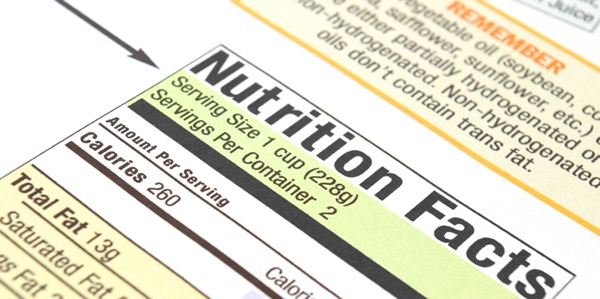Beware: The Sneaky Names for MSG (You’ll Be Shocked)
You probably already know MSG is bad for you.
But did you know just how bad?
And did you know that the problems are not just that’s it’s incredibly bad for you…there are two other problems?
We’ll get onto those in just a minute, but first, let’s remind ourselves:
MSG has proven links to chronic inflammation, dysplasia, fibromyalgia, obesity, fatty liver, high insulin and blood sugar, high cholesterol, liver toxicity, metabolic syndrome, high blood pressure, disturbance to the gut-brain connection, neurological and brain damage and more.
One research paper I found concluded that:
…we suggest that MSG should have its safety profile re-examined and be potentially withdrawn from the food chain
But, the problem with MSG is not just that it’s killing us…
It’s not just disgustingly bad for you, it’s also making really unhealthy foods taste really, really good and really, really addictive.
In the simplest sense, it tricks our taste buds and intuition into eating things that are intrinsically very bad for us in so many ways.
AND then there is a THIRD problem…
You think you can avoid MSG by looking at the label on a food and searching for exactly that: MSG.
But it’s not that easy.
MSG goes by a whole lot of different names, hiding itself away in foods you’d never have suspected.
Most canned soups, cottage cheese, yoghurts, reduced fat/fat-free milks, packaged dips, salad dressings, crackers/chips and the worst…takeaway or frozen pizza.
Just check out the image from FoodBabe at the bottom of this post, listing the sheer volume of ingredients and menu items that contain MSG.
Which gets us onto…
The Most Common ‘Other’ Names for MSG:
- Glutamic Acid (E 620)2
- Glutamate (E 620)
- Monosodium Glutamate (E 621)
- Monopotassium Glutamate (E 622)
- Calcium Glutamate (E 623)
- Monoammonium Glutamate (E 624)
- Magnesium Glutamate (E 625)
- Natrium Glutamate
- Yeast Extract
- Anything hydrolyzed
- Any hydrolyzed protein
- Calcium Caseinate
- Sodium Caseinate
- Yeast Food
- Yeast Nutrient
- Autolyzed Yeast
- Gelatin
- Textured Protein
- Soy Protein
- Soy Protein Concentrate
- Soy Protein Isolate
- Whey Protein
- Whey Protein Concentrate
- Whey Protein Isolate
ALSO: look out for these ingredients that can often contain MSG (free glutamic acid specifically):
- Stock
- Carrageenan (E 407)
- Natural flavors or flavoring
- Citric acid, Citrate (E 330)
- Anything ultra-pasteurized
- Barley malt
- Pectin (E 440)
- Maltodextrin
- Anything enzyme modified
- Anything containing enzymes
- Protease
- Malt extract
- Soy sauce
- Soy sauce extract
- Anything protein fortified
- Anything fermented
- Seasonings
The Ones I Think You Need To Super-Look Out For…
Since I started really looking out for MSG and it’s sneaky names I have been shocked how often I’ve seen:
- Yeast extract
- Hydrolyzed protein
- Soy & whey protein concentrate & isolate
- Malt extract – especially in non-dairy milks
- Textured protein
- …and gelatin
I’ve seen these in SO many foods, and I’m actually, actively trying to shop healthy!
Imagine how often MSG would appear in the shopping trolley of someone who ISN’T trying to shop healthy!
How to Avoid MSG
It’s easy – buy as few pre-packaged, pre-prepared, manufactured, refined foods as possible – but more importantly than that:
Live as close to the Earth as possible – live clean, create your own meals, and enjoy whole, natural, nourishing foods.
Food Babe’s Research into MSG in Pizza
Finally, check out this eye-opening piece of research from Vani, and think again before ordering pizza!
References & Scientific Sources
Monosodium glutamate (MSG): A villain and promoter of liver inflammation and dysplasia; Yuko Nakanishi; Journal of Autoimmunity; Volume 30, Issues 1–2, February–March 2008, Pages 42–50 — Source
Monosodium glutamate neonatal intoxication associated with obesity in adult stage is characterized by chronic inflammation and increased mRNA expression of peroxisome proliferator-activated receptors in mice; Roman-Ramos R1, Almanza-Perez JC; Basic Clin Pharmacol Toxicol.; 2011 Jun;108(6):406-13. doi: 10.1111/j.1742-7843.2011.00671.x. Epub 2011 Feb 9. — Source
The effect of dietary glutamate on fibromyalgia and irritable bowel symptoms; Holton KF1, Taren DL, Thomson CA, Bennett RM, Jones KD.; Clinical and Experimental Rheumatology; 2012 Jul 4. Epub 2012 Jul 4. PMID: 22766026 — Source
Effect of trans-fat, fructose and monosodium glutamate feeding on feline weight gain, adiposity, insulin sensitivity, adipokine and lipid profile; Collison KS1, Zaidi MZ, Saleh SM, Inglis A, Mondreal R, Makhoul NJ, Bakheet R, Burrows J, Milgram NW, Al-Mohanna FA; British Journal of Nutrition; 2011 Mar 24:1-10. Epub 2011 Mar 24. PMID: 21429276 — Source
Effect of dietary monosodium glutamate on trans fat-induced nonalcoholic fatty liver disease; Collison KS1, Maqbool Z, Saleh SM, Inglis A, Makhoul NJ, Bakheet R, Al-Johi M, Al-Rabiah R, Zaidi MZ, Al-Mohanna FA.; Journal of Lipid Research. 2009 Aug;50(8):1521-37. Epub 2008 Nov 11. PMID: 19001666 — Source
Effects of bezafibrate in nonalcoholic steatohepatitis model mice with monosodium glutamate-induced metabolic syndrome; Sasaki Y1, Shimada T, Iizuka S, Suzuki W, Makihara H, Teraoka R, Tsuneyama K, Hokao R, Aburada M; European Journal of Pharmacology; 2011 Jul 15;662(1-3):1-8. Epub 2011 May 1. PMID:
— Source
Biological significance of glutamate signaling during digestion of food through the gut-brain axis; Kitamura A1, Tsurugizawa T, Torii K; Journal of Digestion. 2011;83 Suppl 1:37-43. Epub 2011 Mar 10. PMID: 21389727
— Source
In vitro neurotoxic properties and excitatory aminoacids concentration in the cerebrospinal fluid of amyotrophic lateral sclerosis patients. Relationship with the degree of certainty of disease diagnoses; Fiszman ML1, Ricart KC, Latini A, Rodríguez G, Sica RE. Acta Neurologica Scandinavica; 2010 Feb;121(2):120-6. Epub 2009 Oct 5. PMID: 19804473





